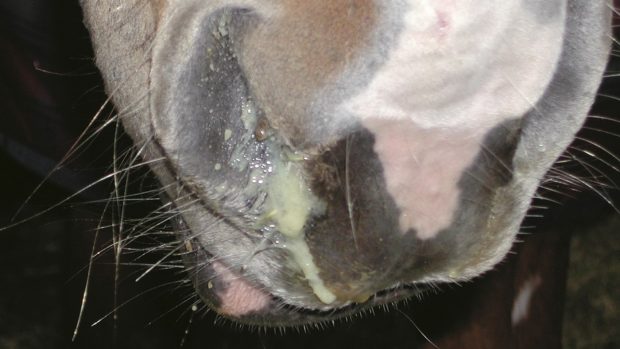An innovative stem cell therapy promises to reduce the impact of tendon and ligament injuries in competition horses.
Developed by VetCell Bioscience Ltd, in association with the Royal Veterinary College, the procedure uses mesenchymal stem cells — cells which can develop into bone, cartilage, connective tissue, lymphatics and blood — to regenerate tendon tissue.
VetCell estimates that European performance horses suffer more than 150,000 tendon or ligament injuries every year. Traditional procedures repair the injury, but may leave the tendon scarred, making it more likely for an injury to re-occur.
By contrast, the new therapy enables tendons and ligaments to recover complete functionality because they are recreated, rather than repaired. The technique is only available to owners and breeders in the UK and Europe at the moment, although plans are afoot to go global.
The procedure exploits the potential of stem cells to act as a repair system by replacing missing cells in the body. Different types of stem cells can theoretically divide indefinitely and turn into practically any specialist body cell — from muscle to brain. In the case of injured tendons or ligaments, veterinary surgeons can implant mesenchymal stem cells into the lesion, where they turn into tissue and replenish the damaged area.
VetCell has run tests on more than 100 horses during the last two years, which have shown that they were able to return to racing and winning after undergoing the treatment.
“The majority have been National Hunt horses, because of the nature of the injuries, but we have treated eventers, show jumpers, dressage horses,” says David Mountford, veterinary surgeon at VetCell.
“Obviously one needs the right sort of injury to treat and [have access to it] at the right time. [You need to implant the stem cells] within 10 weeks from the injury happening, because otherwise you start getting scar tissue formation, after which the treatment is of much less benefit.”
The cells required for the implant can either come from a sample of adult bone marrow — which must be taken from the sternum of the injured horse and requires VetCell to extract and multiply stem cells in the lab — or from the umbilical cord blood of foals. The umbilical cord blood, which is usually discarded at birth, is a good source of stem cells. Collecting it costs little effort and may represent an insurance policy against that horse’s future injuries, as stem cells extracted from the blood can be cryogenically stored to be used in case of necessity.
“There are two real reasons why studs would choose to collect umbilical cord blood,” says Mountford. “First, in case of future injury, extracting bone marrow requires sedation and a marginally invasive procedure, plus extracting the cells from the marrow takes two or three weeks, whereas collecting stem cells from the cord blood is non-invasive and means that cells can be collected at birth, then stored, so, if they are needed, it is a much quicker process.
“Secondly, there is a lot of research going on and potential for other uses — for example fracture repair, or cartilage repair — for which the technology, although not applicable now, can advance in the future.”
This is why VetCell is encouraging stud farms to collect umbilical cord blood by running training courses for experienced grooms. Their programme has attracted plenty of interest from British studs. Among them is Shadwell Stud, which is storing umbilical cord blood stem cells from a number of Arab and Thoroughbred foals.
“We are extremely excited about the long term benefits of stem cell therapy,” says stud director Richard Lancaster. “The trials have demonstrated its viability as an effective ‘safety net’ to secure the future health and welfare of Shadwell’s racehorses should they have the misfortune to suffer tendon or ligament injuries during the course of their performance careers. The collection is achieved with minimal disruption and at a realistic cost.”




